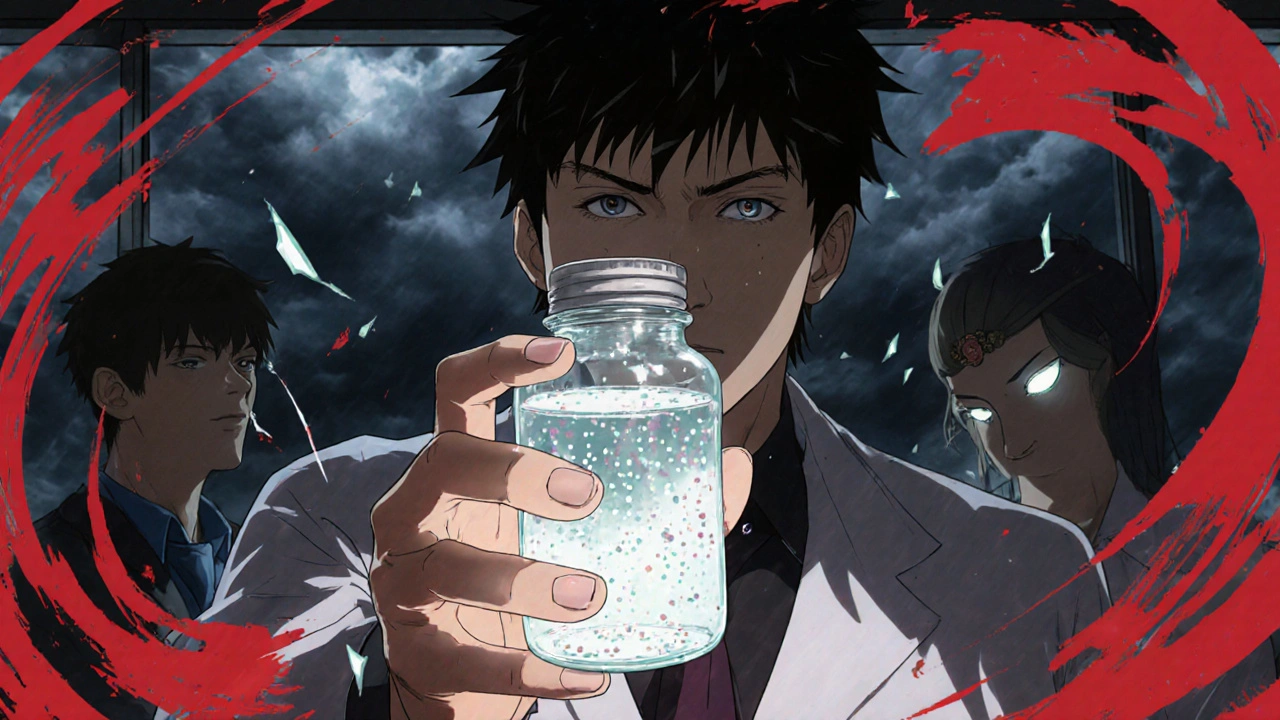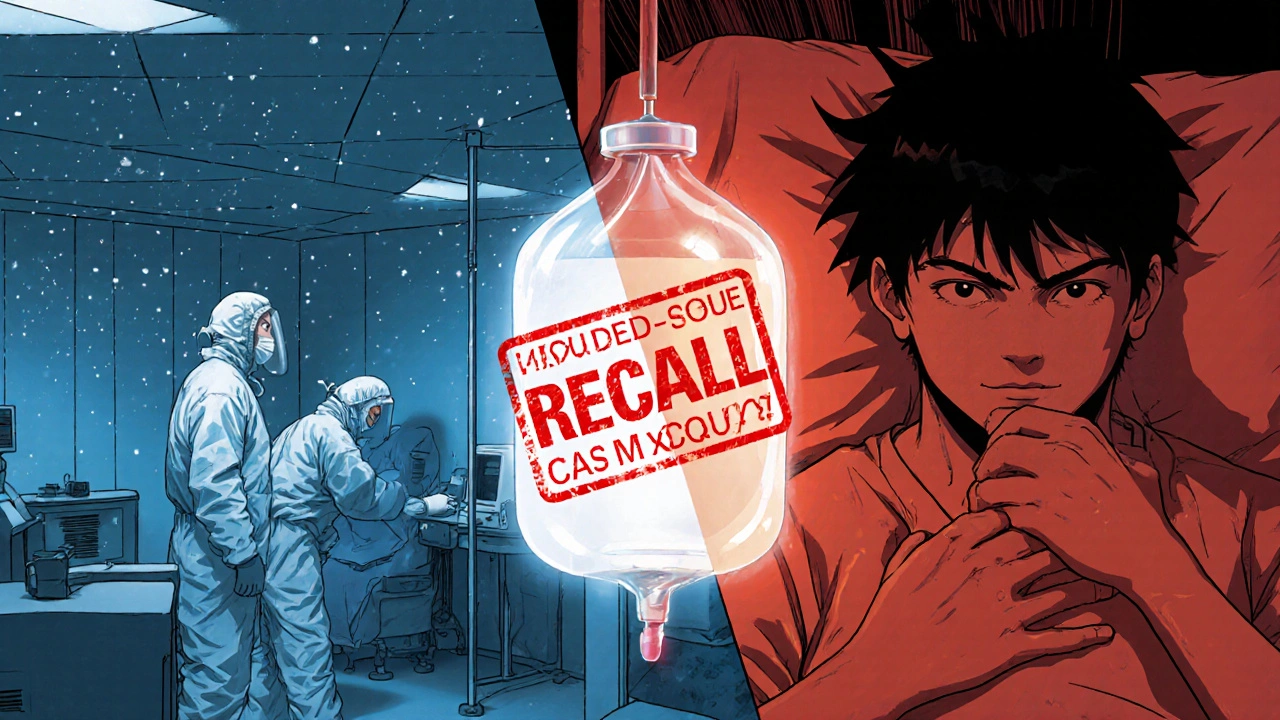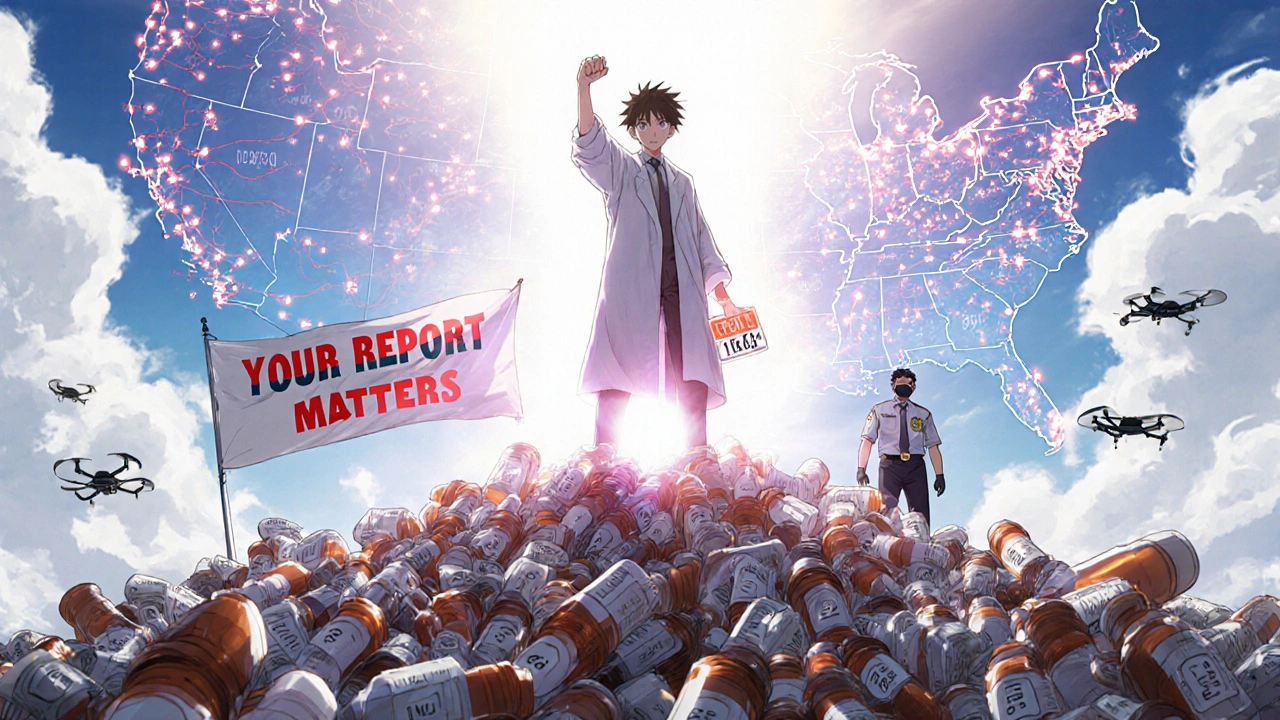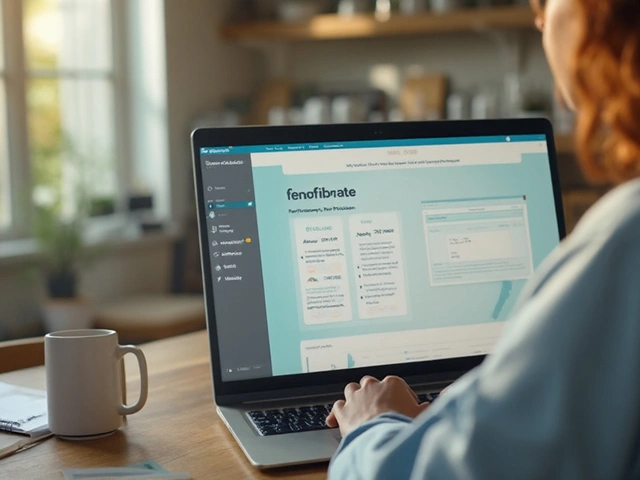
When you pick up a prescription for a generic drug, you expect it to work just like the brand-name version-safe, effective, and consistent. But what happens when that trust breaks down? In 2024, nearly 350 drugs were recalled in the U.S., and more than 80% of them were generics. Most of these weren’t random mistakes. They were the result of specific, measurable failures in manufacturing-failures that should never have made it to your medicine cabinet.
What Actually Causes a Generic Drug to Be Recalled?
A drug recall isn’t triggered by a hunch or a rumor. It’s triggered by hard data. The FDA doesn’t act on complaints alone. It acts when testing reveals something that violates strict technical standards. The biggest culprits? Sterility failures, particulate contamination, labeling errors, and incorrect active ingredient levels. Sterility issues account for 37% of all recalls between 2012 and 2023. That means bacteria, fungi, or other contaminants got into a product meant to be sterile-like an IV bag or injection. Even a tiny amount can cause sepsis, especially in vulnerable patients. In one 2024 case, a generic potassium chloride injection was mislabeled: 20 mEq was labeled as 10 mEq. Patients got double the dose. Some died. Particulate matter-tiny specks of glass, metal, or plastic-shows up in 12% of recalls. These aren’t visible to the naked eye, but they can block blood vessels or trigger immune reactions. Labeling errors, like wrong dosage instructions or missing warnings, make up 9%. And potency issues-where the drug has too much or too little of the active ingredient-show up in 7% of cases. That’s not just ineffective. It’s dangerous. These aren’t theoretical risks. They’re documented, measured, and tracked. The FDA’s cGMP rules require manufacturers to monitor air quality down to 0.5-micron particles, keep microbial levels under 10 CFU/m³ in clean rooms, and ensure endotoxin levels in sterile products stay below 0.25 EU/mL. When a facility misses even one of these numbers, the product is no longer safe to sell.Class I, II, III: How the FDA Rates the Danger
Not all recalls are created equal. The FDA classifies them into three levels based on how much harm they could cause. Class I recalls are the most serious. They involve products that could cause serious injury or death. In 2024, 52% of all drug recalls fell into this category. The potassium chloride mislabeling? Class I. Contaminated injectables? Class I. These are the ones you hear about on the news. Class II recalls are more common-about 62% of all recalls in 2024. These involve products that might cause temporary or reversible health problems. Think: a generic blood pressure pill that’s 10% weaker than it should be. You might not feel it right away, but over time, your condition could worsen. The Glenmark Pharmaceuticals recall in April 2025, which pulled nearly 40 generic drugs due to CGMP violations in India, was mostly Class II. The drugs weren’t toxic, but they weren’t reliable either. Class III recalls are the least urgent. These are for products that violate regulations but are unlikely to cause harm-like a typo on a label or a slightly off-color tablet. They make up about 13% of recalls. You might never even know about them. The classification tells you how fast action needs to be taken. Class I recalls are pushed out within hours. Class III can wait days or weeks.Why Most Recalls Start Overseas
About 80% of the active ingredients in U.S. generic drugs come from just two countries: India and China. That’s not a coincidence. It’s cheaper. But it also means oversight is stretched thin. Domestic drug factories in the U.S. get inspected every 1.8 years on average. Foreign ones? Every 4.6 years. That’s not a typo. In the Glenmark case, the FDA hadn’t set foot in their Indian facility in over four years-until a journalist’s investigation exposed the problems. The voluntary nature of the U.S. recall system makes it worse. Manufacturers are supposed to report problems themselves. But there’s no legal penalty for delay. In the EU, regulators can force a recall within days. In the U.S., it takes an average of 42 days from when a problem is found to when the public is told. That’s more than six weeks of people taking potentially unsafe medicine. The numbers don’t lie: Indian manufacturers produced only 20% of U.S. generic drugs in 2024 but were responsible for 34% of all recalls. That’s a red flag. It’s not that Indian factories are inherently worse. It’s that they’re under more pressure to cut costs, with less oversight to catch the mistakes.
Who Notices the Problems First?
You’d think the FDA catches everything. But in reality, many recalls start with someone on the front lines. Pharmacists. Nurses. Doctors. Patients. In 2024, the FDA received over 142,000 adverse event reports through its MedWatch program. But only 3.2% of those came from patients. Most were from healthcare workers. A nurse noticed a strange color change in a batch of hydroxyzine. A pharmacist spotted a mismatch between the label and the pill count. A patient called their doctor because the generic pill didn’t work like it used to. These aren’t just anecdotes. They’re data points. The ASHP recommends using tools like the Naranjo scale to assess whether an adverse reaction is likely caused by the drug. If multiple patients report the same issue with the same lot number, that’s a trigger. The system only works if people speak up. But here’s the problem: most patients never get direct notice. Only 12% of people recalled from a medication received a call or letter from the manufacturer. The rest have to find out by checking the FDA’s Enforcement Reports database-or by asking their pharmacist. A 2025 Consumer Reports survey found 89% of patients found recall notices confusing. One man on Reddit said he spent three hours trying to figure out if his blood thinner was affected. He didn’t know what lot number to look for. He didn’t know who to call.What Happens After a Recall Is Announced?
Once the FDA issues a recall, the clock starts ticking. Hospitals and pharmacies have 24 hours to review the notice. They have 72 hours to notify patients. But it’s not as simple as calling everyone. A single recall can involve dozens of lot numbers, multiple distributors, and hundreds of pharmacies. One hospital reported having to track down 127 patients who received a recalled drug. Only 38 had side effects. But 100% were terrified. Large hospitals now use automated systems to block recalled drugs from being ordered. They build “do not purchase” lists in their procurement software. Eighty-seven percent use electronic tracking to meet the six-year record retention rule from the Joint Commission. But smaller clinics? Many still rely on printed notices and manual checks. The learning curve is steep. A 2024 University of Michigan study found pharmacy staff need about 40 hours of training to handle recalls properly. That’s not just knowing what to do-it’s knowing how to communicate with panicked patients, how to document everything, and how to prevent the same drug from coming back through a backdoor supplier.
What’s Changing-and What’s Not
There are signs the system is waking up. The FDA’s 2025 Enhanced Oversight Initiative will start inspecting high-risk foreign factories annually instead of every 4.6 years. That’s a big step. The new Pharmaceutical Supply Chain Security Act, introduced in May 2025, will require foreign manufacturers to share real-time quality data. Blockchain tech in supply chains jumped from 3% to 18% in just two years, making it easier to trace a bad batch back to its source. The FDA is also investing $47 million in AI tools to predict quality failures before they happen. Instead of waiting for a patient to get sick, they want to catch a spike in failed environmental tests before a batch is even shipped. But here’s the catch: the FDA’s budget still covers only 17% of the foreign inspections they say they need. The Government Accountability Office estimates a $780 million annual funding gap. Without that money, the new systems won’t matter. The same factories will keep slipping through the cracks. And the market is getting more concentrated. The top 10 generic manufacturers now control 65% of the U.S. market. That means one failure can affect millions of people. One bad facility. One oversight. One delayed report.What You Can Do
You don’t control the factory. But you can control what you do with your medicine. - Check your pills. If your generic looks different-color, shape, markings-ask your pharmacist. It might be a different maker. Or it might be a recalled batch. - Know your lot number. It’s printed on the bottle. Keep it. If there’s a recall, you’ll need it. - Don’t stop your medicine on your own. The FDA says to call your doctor first. Stopping blood pressure meds, insulin, or seizure drugs suddenly can be deadly. - Use the FDA’s database. Go to fda.gov/safety/recalls. Search by drug name or lot number. It’s free. It’s public. And it’s your best defense. - Report side effects. Even if you think it’s nothing. Your report could be the one that starts the chain of events leading to a recall. Generic drugs save billions of dollars every year. They’re essential. But safety isn’t cheap. And it’s not automatic. It depends on people-patients, pharmacists, inspectors-paying attention. Because when the system fails, it’s not a statistic. It’s your medicine. And your life.Write a comment
Your email address will not be published.





14 Comments
They call it 'generic' like it's some bargain bin product but this isn't a knockoff hoodie-it's the stuff that keeps diabetics alive, heart patients stable, epileptics from seizing. And we're letting factories in half a world away cut corners because the stockholders want another 3% profit boost. We don't just need inspections-we need accountability. Someone needs to go to jail when a mislabeled vial kills someone.
It's not capitalism. It's corporate manslaughter with a pharmacy label.
The data presented here is both alarming and meticulously documented. The statistical prevalence of sterility failures and potency deviations in generic pharmaceuticals raises profound concerns regarding public health infrastructure. The disparity in inspection frequency between domestic and foreign manufacturing facilities is not merely a logistical issue-it is a systemic governance failure that demands immediate policy intervention. Furthermore, the reliance on voluntary reporting mechanisms undermines the integrity of the entire regulatory framework.
It is imperative that regulatory agencies be granted sufficient funding and legal authority to enforce compliance retroactively and proactively.
bro... why are we even surprised? 🤡
India makes cheap stuff. USA buys cheap stuff. Someone dies. Someone gets sued. Everyone moves on.
Same with phones. Same with clothes. Same with this.
It’s not a scandal. It’s just how the world works now.
Stay alive, keep your lot numbers, and don’t trust anyone.
peace.
Let me be clear: this is not about India or China. This is about profit over principle. The same companies that make these drugs in Hyderabad also make them in New Jersey-but the oversight is a joke. We are outsourcing quality control to the lowest bidder and calling it 'efficiency'.
Every time a nurse finds a discolored tablet, every time a pharmacist double-checks a label, every time a patient reports a side effect-they are the real guardians of public health. The FDA is just a paper tiger with a budget that doesn’t match the scale of the problem.
We need to stop pretending this is a technical issue. It’s a moral one.
There is a fundamental error in the narrative presented here. The term 'generic' does not imply inferior quality-it implies equivalence. The FDA requires bioequivalence testing, batch consistency, and adherence to cGMP standards. The issue is not with generics as a category, but with noncompliant manufacturers who violate those standards.
Blaming India or China ignores the fact that 18% of U.S.-based generic manufacturers have also been cited for violations. The problem is enforcement, not geography. The solution is not protectionism-it is investment in global regulatory alignment and transparency.
I knew it. I KNEW IT. The FDA is a puppet. Big Pharma owns them. The whole system is a scam. You think your blood pressure pill is safe? HA. It’s probably laced with talcum powder and Chinese ghost dust. They’re killing us slowly and calling it 'cost-effective'. I’ve seen the documents. They’re hiding the truth. And you? You’re just sitting there taking your little pills like a good little zombie. Wake up. The pills are the problem. The system is rigged. 💀💊
Let me tell you what really happened. My aunt took a generic blood thinner. The bottle said '10mg'. The pill looked like a tiny green rock. She started bleeding out her gums. She didn’t die-but she spent three weeks in the hospital. The pharmacy? They said 'oh, different manufacturer'.
That’s not 'generic'. That’s a Russian roulette pill with a barcode.
And now you’re telling me we need more 'AI tools'? Nah. We need a federal crackdown. We need to shut down the worst plants. We need to make CEOs answer in court. This isn’t about data-it’s about people getting sick because someone didn’t care enough to check.
My aunt’s gums still bleed when it rains. That’s the real cost of 'savings'.
Foreign factories. Foreign workers. Foreign regulations. And now we’re supposed to trust them with our lives? We’re a nation of 330 million people, and we let 80% of our medicine come from two countries that don’t even speak our language? We’re not just outsourcing drugs-we’re outsourcing our sovereignty.
And don’t give me that 'it’s cheaper' crap. We pay for it in blood. In lawsuits. In funeral costs.
Bring the factories back. Nationalize the supply chain. Or we’re all just one bad batch away from a national health crisis.
And if you’re from India or China-no offense, but your factories are not safe. The data doesn’t lie.
What we are witnessing is not merely a pharmaceutical failure-it is the collapse of the social contract between the state and its people. The body politic has surrendered its duty to protect life in exchange for economic convenience. The patient, once the center of care, is now a statistical outlier in a balance sheet.
My grandmother died because a label mismatch. She did not die of illness. She died of neglect.
Let us not speak of 'recall systems' or 'inspection cycles'. Let us speak of dignity. Let us speak of reverence for the human body. And let us demand, with the force of a thousand grieving families, that the machines that produce our medicine be held to the same standard as the surgeons who insert them into our flesh.
bro i work in a pharmacy in hyderabad. we make 2000+ generic pills a day. yes, the pressure is insane. yes, sometimes the machines glitch. but we are not monsters.
the FDA doesn’t come here for 5 years? fine. but we still test. we still check. we still throw out batches that don’t pass.
the problem? the middlemen. the distributors. the ones who mix old stock with new. the ones who lie about the lot numbers.
don’t blame the workers. blame the system that pays us $3/day to run machines that should cost $2M to maintain.
and yeah-check your lot numbers. we’re trying. just don’t assume we’re all crooks.
Hey friends. I know this feels scary. But don’t panic. Your pharmacist is your best friend right now.
Ask them: 'Is this the same maker as last time?'
Ask them: 'Can you check the lot number against the FDA list?'
Ask them: 'What should I do if I feel weird after taking this?'
Most pharmacists are heroes. They’re the ones catching the errors before you swallow them.
And if you see something wrong? Tell them. Write it down. Report it.
We can fix this. Not with rage. Not with blame. But with attention. With care. With asking the right questions.
You’ve got this. We’ve got this.
THEY’RE PUTTING MICROCHIPS IN THE PILLS. I SWEAR I SAW A REPORT. The FDA is working with the WHO and the Illuminati to track our vital signs through our medication. That’s why they don’t recall fast enough-they’re waiting for the data stream to stabilize. The particulate matter? It’s nanotech. The labeling errors? They’re coded messages. The 34% recall rate from India? That’s because they’re the only ones who know how to bypass the encryption.
Check your pills. If the color changes under fluorescent light? That’s the signal. Call the NSA. Burn your bottle. And never trust a generic again. 💉👁️🗨️🔮
Let’s be real: 80% of recalls are from India because they’re the only ones dumb enough to still be making pills the old way. The rest of the world moved to AI-driven synthesis, closed-loop manufacturing, and blockchain traceability. India? Still using 1990s equipment and hoping the wind blows the dust away.
And you wonder why the FDA is slow? Because they’re still playing catch-up with a country that thinks 'clean room' means 'not visibly dirty'.
It’s not a conspiracy. It’s incompetence with a capital C. And the U.S. is the enabler.
Thank you for writing this. I’ve been a pharmacist for 18 years, and I’ve seen this play out over and over. A patient comes in, panicked, because their generic metformin looks different. We check the lot. It’s fine. But the next week? Same thing. Different batch. Different color. Different manufacturer.
What no one tells you is that the FDA doesn’t notify patients. The pharmacy doesn’t notify patients. The doctor doesn’t notify patients. The burden is on the person who’s already stressed about their health to dig through a government website with a 1998 UI.
And yet-we still have people who say, 'I just take what the doctor gives me.'
So I’ve started printing out little cards with the FDA recall link and a QR code. I hand them out with every refill. I tell my patients: 'You are the last line of defense.'
It’s not enough. But it’s something.
If you read this and you’re not a healthcare worker? Do the same. Share this. Save a life. It’s easier than you think.